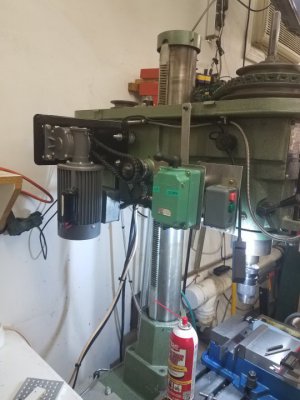Hello all, thanks for the nice comments about my project.
Tomzo, I had to laugh when I saw your post, I struggled with all those things also. Still not sure if I did everything right. And yes I added a gear motor to raise and lower the head. My shoulders are bad and I'm doing all this to allow me to keep working on the mill for as long as possible. So this made the build a little more complex because I incorporated the control of the head into this build.
Unfortunately I didn't do a wiring diagram, I built it on the bench and when I got it working right I installed it on the mill.
I will put together a list of components for you.
The really fun part of this build was the series of relays I used to control the availability of power to the various switches. The lighted switches indicate when a switch is active. So for example, when main power is on at the wall box, the green switch on the operator panel lights because that is the only function you can do at that time. When you hit the green button then the red light comes on, green goes out and amber fwd/reverse is lit. If you unlock the head, the head up/ down goes on and fwd/rev goes out until you lock the head. Very fun stuff.
I use 220v for the VFD, 110v for the gear motor, 24v for the control circuit and 12v for the cooling fan circuit in the wall box.
More to come.
Tomzo, I had to laugh when I saw your post, I struggled with all those things also. Still not sure if I did everything right. And yes I added a gear motor to raise and lower the head. My shoulders are bad and I'm doing all this to allow me to keep working on the mill for as long as possible. So this made the build a little more complex because I incorporated the control of the head into this build.
Unfortunately I didn't do a wiring diagram, I built it on the bench and when I got it working right I installed it on the mill.
I will put together a list of components for you.
The really fun part of this build was the series of relays I used to control the availability of power to the various switches. The lighted switches indicate when a switch is active. So for example, when main power is on at the wall box, the green switch on the operator panel lights because that is the only function you can do at that time. When you hit the green button then the red light comes on, green goes out and amber fwd/reverse is lit. If you unlock the head, the head up/ down goes on and fwd/rev goes out until you lock the head. Very fun stuff.
I use 220v for the VFD, 110v for the gear motor, 24v for the control circuit and 12v for the cooling fan circuit in the wall box.
More to come.

